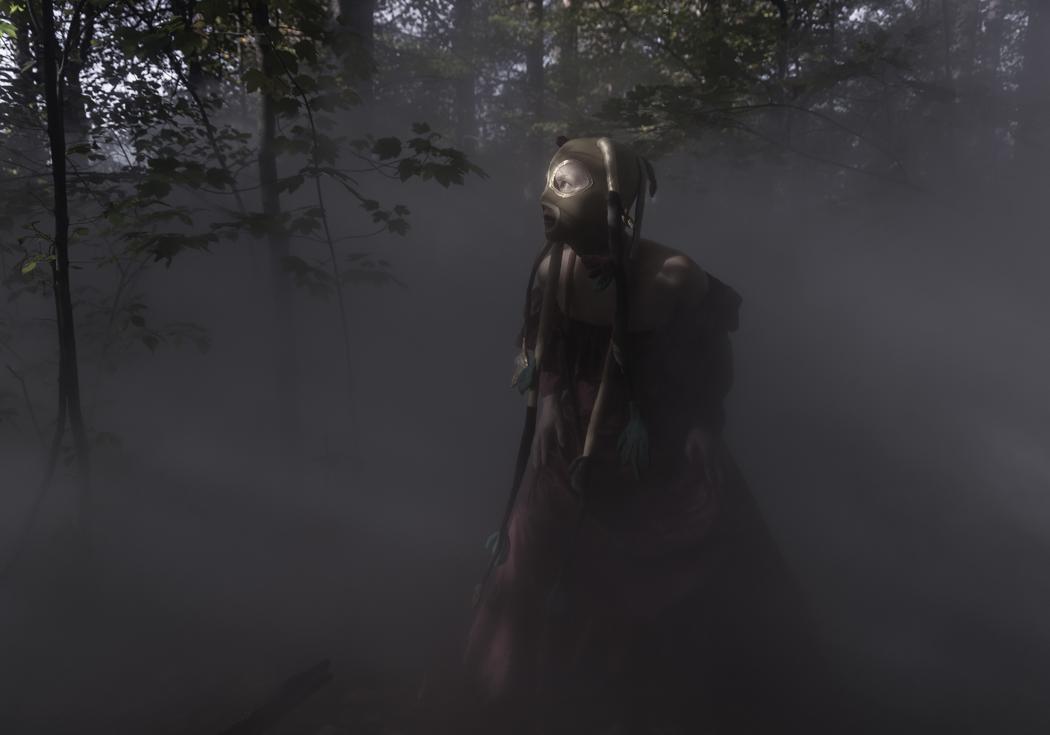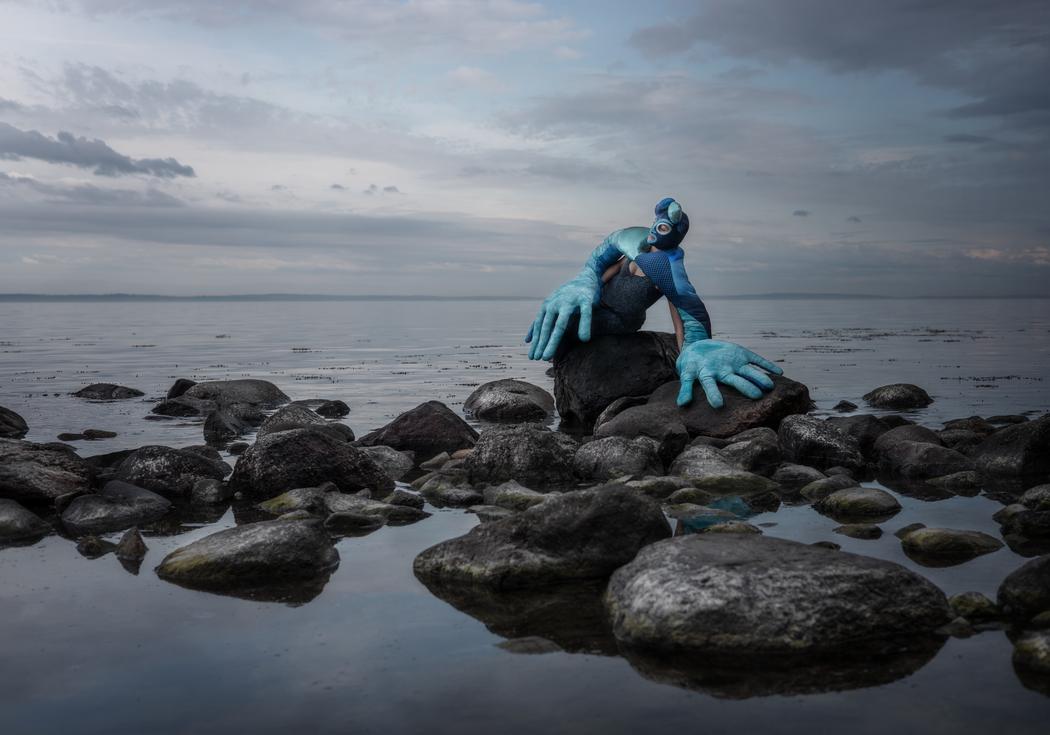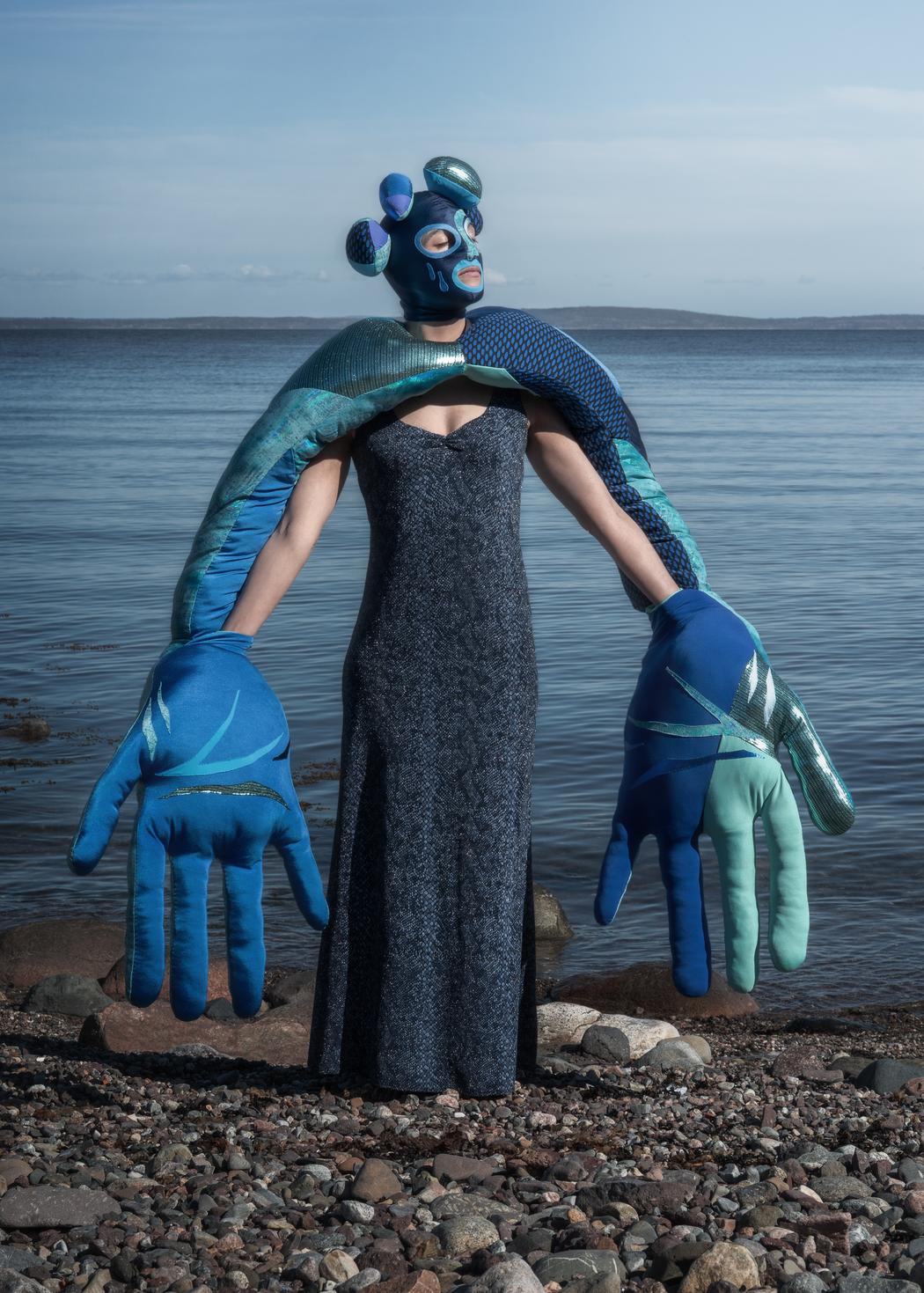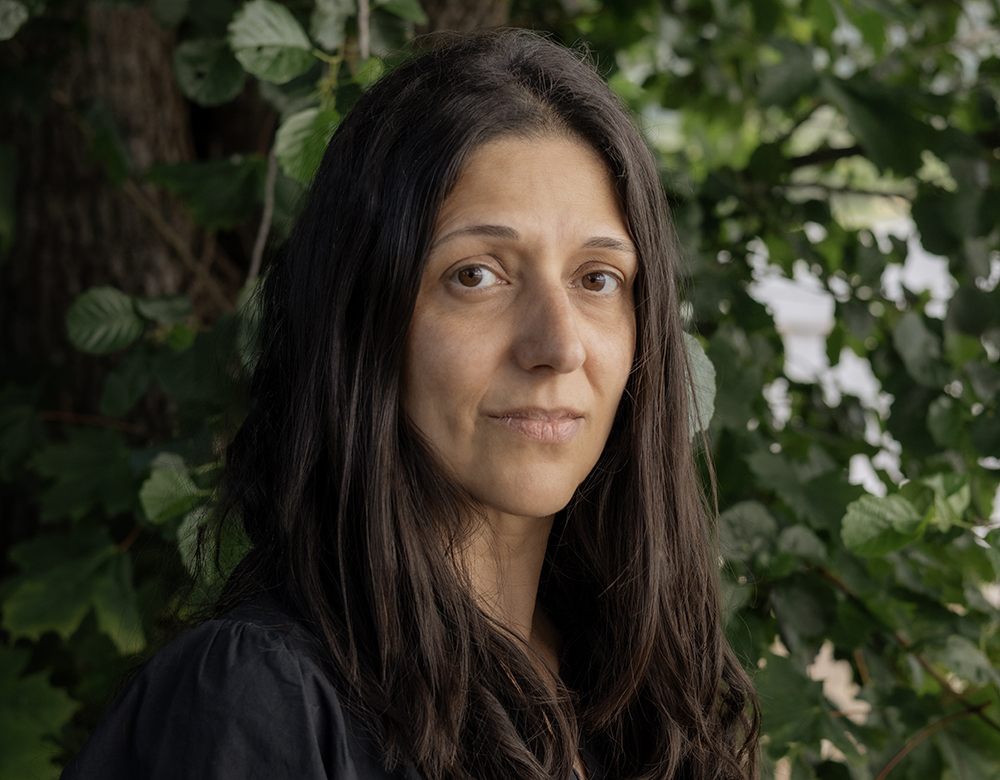Margarida Paiva
What inspired the concept behind Weaving Spells?
It was a long process to arrive at this project, which was developed with ideas rooted in earlier works. In 2019, I began working with photography inspired by nature and animism. I was eagerly reading about animism, old beliefs, and traditions that see nature as alive and interconnected. Around the same time, I happened to meet a group of women who gathered and performed rituals in the forest. Their practices deeply inspired my work.
Before I started the project Weaving Spells, I had already completed two photography series related to these themes: I Am The Forest (2021) and Eight Dark Dreams of Green Leaves (2023).
How did your collaboration with Anaïs Lalange come about?
It happened by chance that we had a mutual friend who lives in Oslo, where I also live. Anaïs is based in London, and in 2023 she visited Oslo for an exhibition with our mutual friend, Hello The Mushroom. In this exhibition, Anaïs showcased many of her masks, something she has been working on for years, drawing inspiration from her long experience as a performer and professional wrestler.
I loved her work, and I loved her as a person. She was open, creative, and full of energy. I started following her on Instagram and began closely observing her work. A few months later, I asked if she’d be interested in creating a witch mask, since witchcraft and the traditional image of the witch in the woods have long inspired my own practice.
At first, the witch mask was meant to be a one-time project. But after I received the mask and did a photo shoot with a friend wearing it in the forest, I felt truly inspired and proposed that we continue our collaboration.
I love working with Anaïs because of her wild creativity. She has complete freedom in designing and crafting the masks. I simply propose a character, and she takes it from there, sketching, experimenting, and finding the right materials for each unique piece.

Why did you choose masks as a central element in this project?
After beginning my collaboration with Anaïs, I started researching the use of masks in pagan rituals and folklore, which has influenced the project in many ways. A mask can conceal, but it also reveals. When someone wears a mask, they step into another identity or character. In this project, the masks bring specific archetypes to life, and they’re designed to be worn by anyone, allowing different people to embody these figures and their connection to the natural world.
In what ways does Weaving Spells engage with folklore and mythology?
I’ve lived in Norway for many years, and Nordic folklore has been a source of inspiration. In pagan rituals, masks often played a symbolic role. For example, during pagan celebrations, disguises and masks were commonly used as people dressed up as spirits, animals, or mythical beings. Similar pagan traditions exist in many cultures around the world. Although these traditions are not direct references to the project, they have been an influence in terms of symbolism and the way the natural world is seen as animated and spiritually charged.
Also I’ve been researching ecofeminist movements, especially spiritual ecofeminism as an earth-based philosophy. When the project began with the witch mask, I saw the witch as an archetype of a forest guardian. From there, the idea for other archetypes emerged: the maiden, who cares for nature; the mother, with wide arms, who nurtures the sea; and the crone, the old wise woman.
It’s important to note that the project also engages with storytelling. When I photograph these characters wearing the masks, it’s not about documenting the masks themselves, but about building a narrative around the characters and their relationship with the landscape in which they are photographed.
Therefore also the title of the project Weaving Spells: Weaving suggests a deliberate, creative act, one that brings together different threads: folklore, ecofeminism, and animism. It also evokes a traditionally feminine, earth-bound practice, like spinning, crafting, or ritual work, rooted in care and connection. Spells points to the magical, symbolic, and spiritual dimension of the project. It connects to the idea of animistic beliefs in a living, spiritually charged natural world, and to the transformative power of rituals and masks. It’s not about casting spells in a literal sense, but about evoking a sense of wonder, intention, and connection, almost like inviting the viewer into a shared ritual.

How has your Portuguese heritage influenced this project?
I grew up in a rural area until I was 13, when my parents moved to the city. My grandparents on both sides owned farms and lived off the land their entire lives, so nature was a constant presence throughout my childhood.
At the same time, although Portugal is a Catholic country, it is rich in pagan traditions, and Christianity and paganism often coexist. One of my childhood memories is of a neighbour whom people called a witch. She was a healer, what in Portuguese we call curandeira, someone people in rural areas turned to for help, but if something went wrong, she was often the one they blamed.
When I think about masks and pagan rituals, one tradition that stands out clearly from my memory is the Careto. This ritual, still alive today in northern Portugal, has deep roots that trace back to possibly Celtic customs. The Caretos are figures who wear masks and colourful costumes made of fringed fabric and rattling accessories that make sound as they move. They appear during Entrudo, a celebration that marks the transition from winter to spring. The Careto tradition is considered one of the most ancient folk practices still carried on in Portugal.
You describe the mask as an activist statement — can you elaborate on this idea?
It’s interesting because when I first saw the masks made by Anaïs, with their balaclava design, I was immediately reminded of activist groups wearing similar masks in protest movements. In that context, the primary function of the balaclava is to conceal identity; it protects activists from being identified by authorities. But beyond that, the balaclava has evolved into a powerful visual symbol of rebellion and resistance.
In this sense, I see the archetypes, the fictional characters in my photographs, as making an activist statement for nature. This connects back to what I mentioned earlier about spiritual ecofeminist movements: an earth-based philosophy rooted in care, resistance, and reconnection with the natural world.

What messages do you hope the audience takes away from Weaving Spells?
I hope people feel inspired and understand that protecting the Earth is both a spiritual and political act.


Leave a Reply
You must be logged in to post a comment.